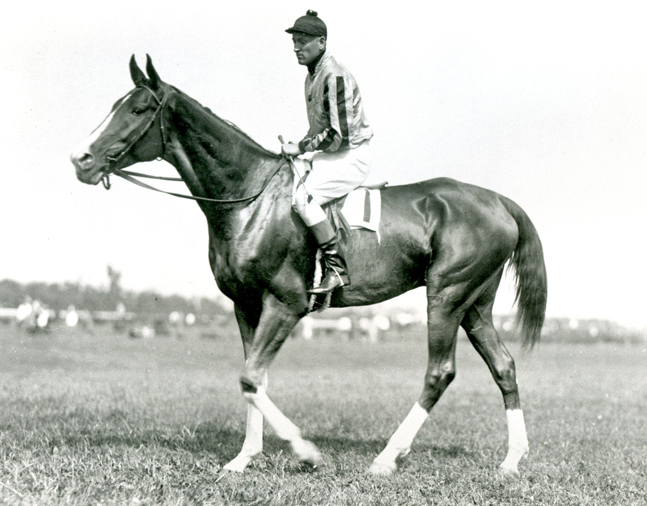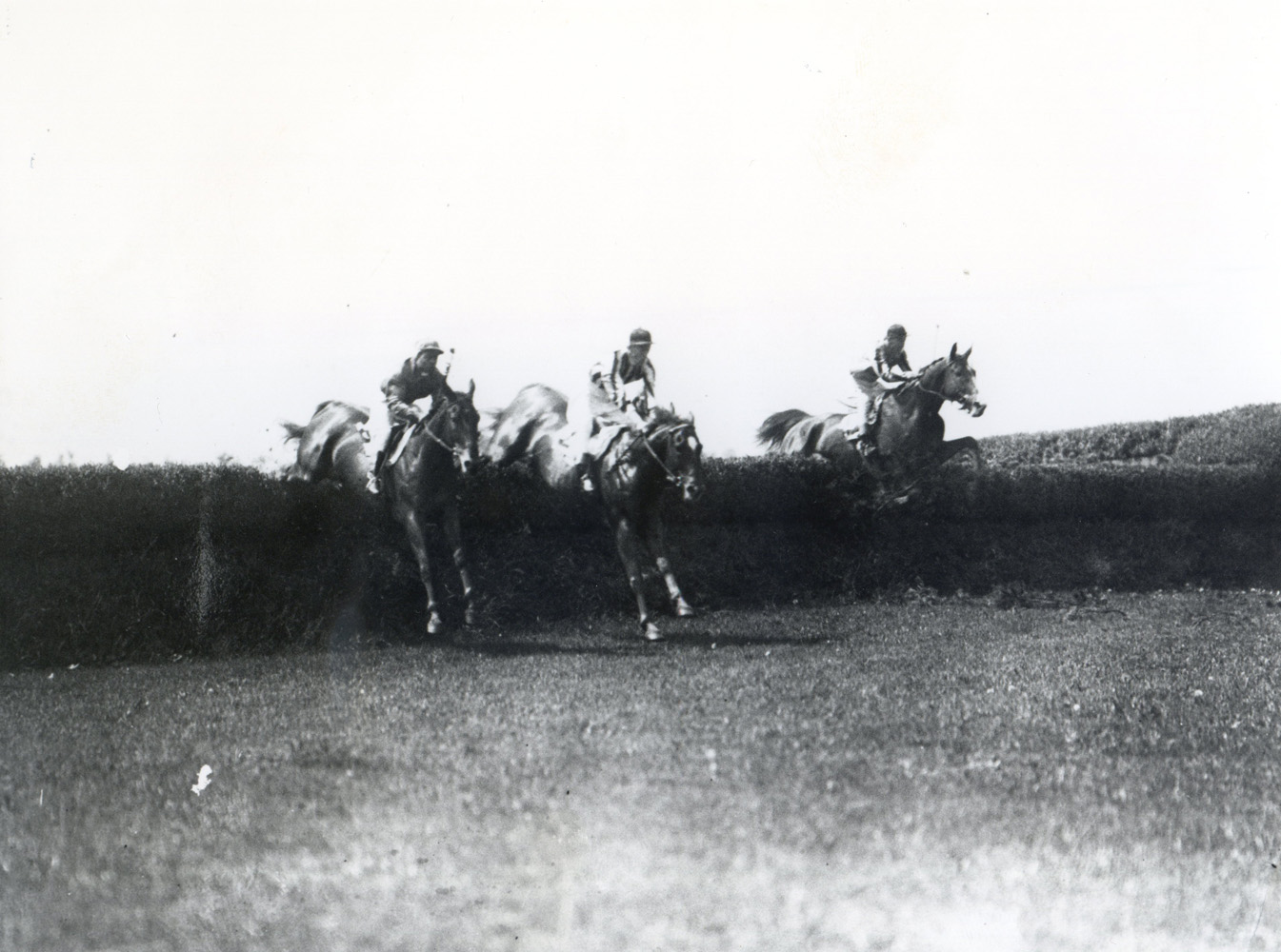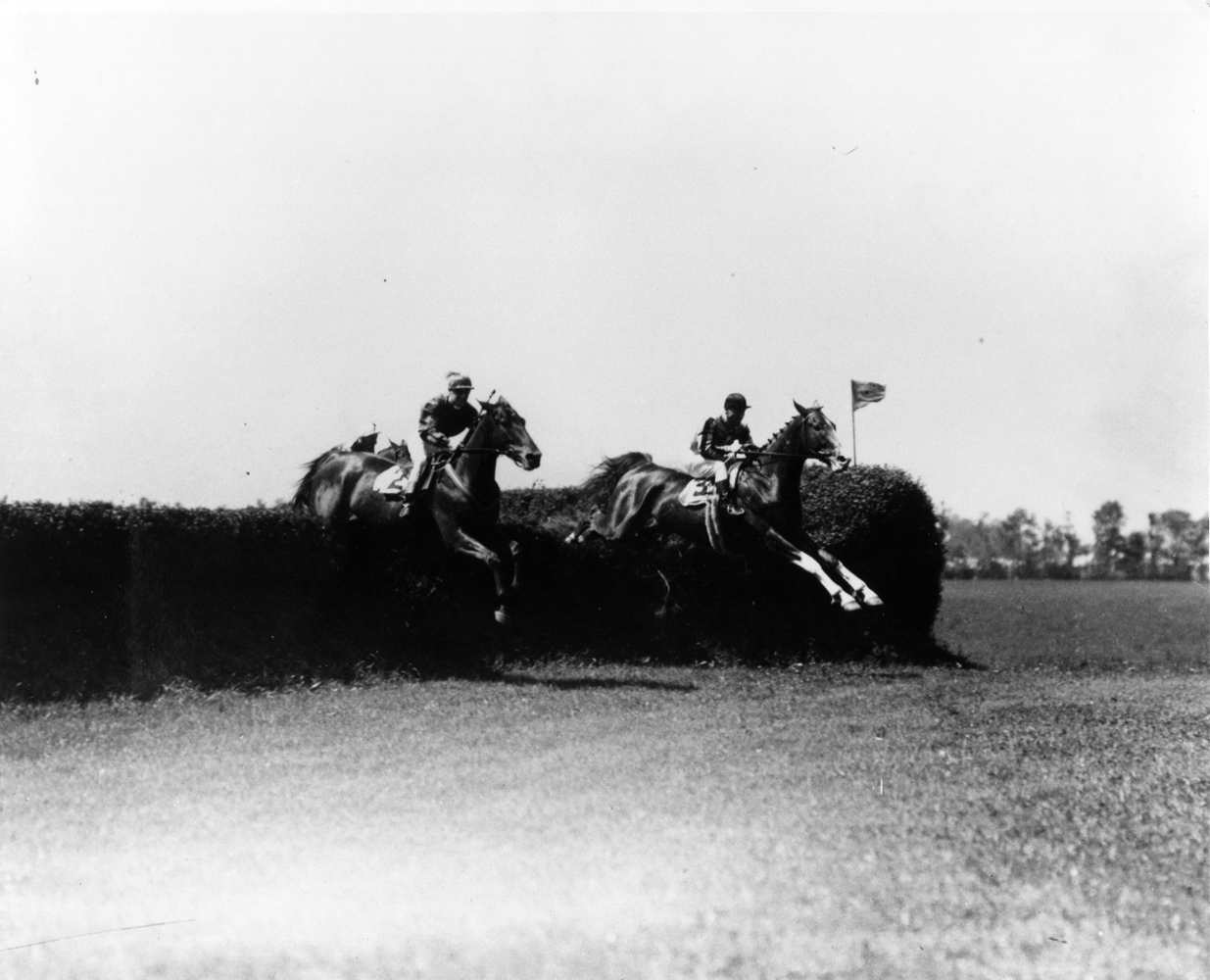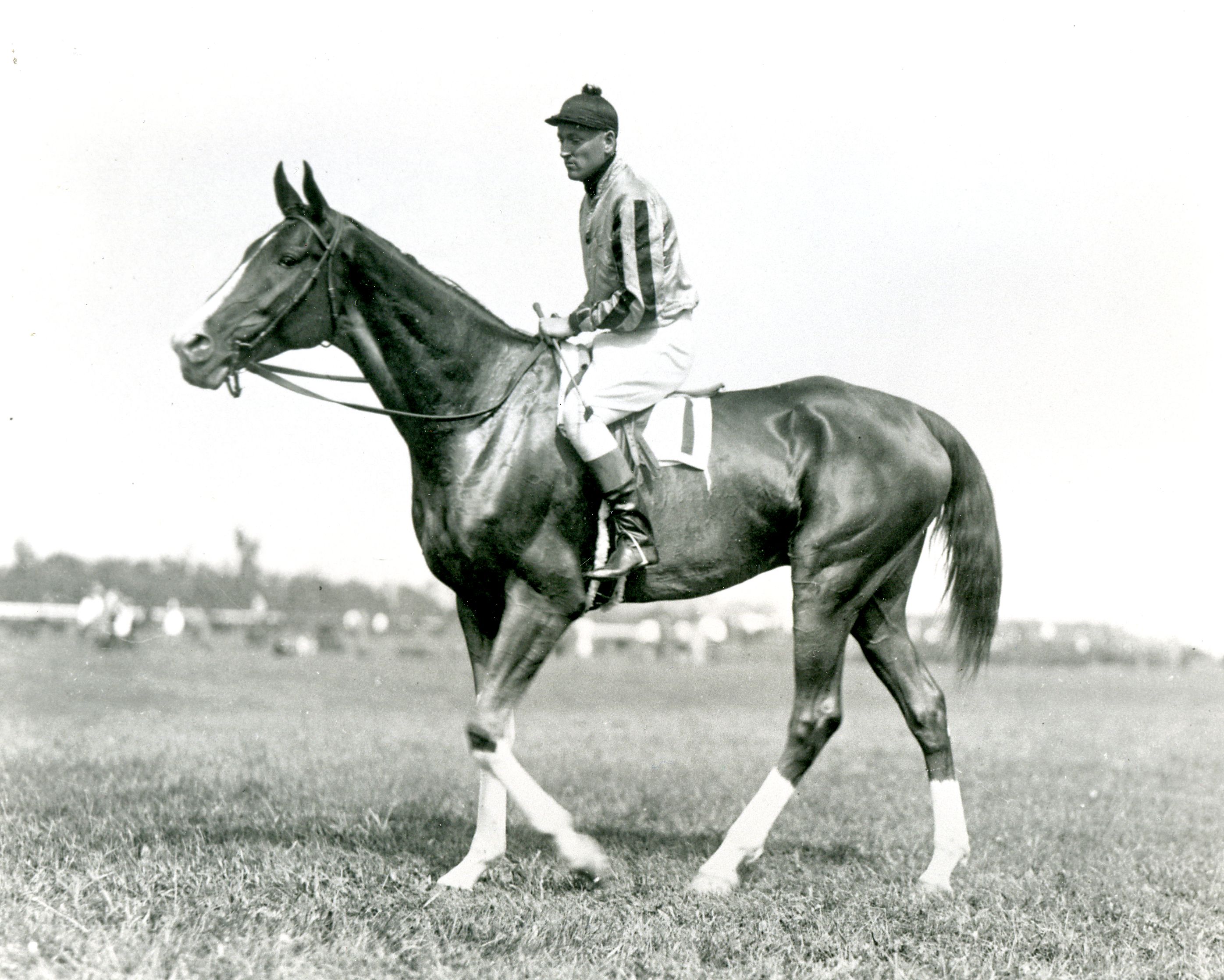Jolly Roger (KY)
A flashy chestnut with four white stockings and a broad blaze, Jolly Roger developed from a nondescript flat racer into one of the top steeplechasers of the 20th century.

1965
1922
Pennant
Lethe
All Gold
Harry Payne Whitney
Greentree Stable
Vincent Powers
1924-1930
$143,240
Racing Record
49
Starts
| 1924 | 7 | 1 | 0 | 0 | $850 $850 |
| 1925 | 4 | 2 | 1 | 0 | $3880 $3,880 |
| 1926 | 11 | 4 | 1 | 3 | $13110 $13,110 |
| 1927 | 8 | 6 | 2 | 0 | $63075 $63,075 |
| 1928 | 7 | 3 | 2 | 2 | $45950 $45,950 |
| 1929 | 4 | 0 | 1 | 3 | $4050 $4,050 |
| 1930 | 8 | 2 | 2 | 1 | $12325 $12,325 |
Biography
A flashy chestnut with four white stockings and a broad blaze, Jolly Roger developed from a nondescript flat racer into one of the top steeplechasers of the 20th century.
Bred in Kentucky by Harry Payne Whitney, Jolly Roger was a son of Pennant out of the All Gold mare Lethe. Jolly Roger won once from seven starts as a flat racer for Whitney as a 2-year-old in 1922. He did not place in any of his other starts as a juvenile. He made his career debut at Belmont on Sept. 9, 1924, finishing eighth in a 5½-furlong maiden event. He was then 12th in his next start before being shipped to Woodbine on Sept. 25 for his lone victory of the season.
After struggling throughout the remainder of his 2-year-old campaign, Jolly Roger was acquired from his breeder by Greentree Stable (Helen Hay Whitney) and transitioned into a jumping career by his trainer Vincent Powers, a former leading flat and steeplechase jockey who earned induction into the Hall of Fame. Trained throughout the spring and summer of 1923, Jolly Roger did not make his 3-year-old debut until Sept. 9, at Belmont, in the Rustic Steeplechase. Jolly Roger won the 2½-mile event by six lengths with Fairmount second. The race began a long rivalry between Jolly Roger and Fairmount. Jolly Roger also won the Elkridge Steeplechase that year.
As a 4-year-old in 1926, Jolly Roger won four times from 11 starts and was third to the more experienced Fairmount in the prestigious Temple Gwathmey. His victories that year included the Wood Park Steeplechase, Wheatley Steeplechase, Wingfield Steeplechase, and Baldwin Steeplechase.
At 5, Jolly Roger began to come into his own as a jumper, winning six of eight starts, including a victory over Fairmount in the American Grand National, which G. F. T. Ryall described in The Sportsman: “I doubt if any race through the field ever thrilled a crowd more than did the Grand National. Half the crowd was for Fairmount, the other half for Jolly Roger. That there were four other entries was only incidental. Early on, Fairmount opened up a five-length lead, but he blasted the eighth fence. Though Fairmount and jockey Byers pulled themselves together and continued to lead for a few more fences, Jolly Roger and Crawford garnered the lead at the fifteenth fence and drew off by five lengths for the victory. Fairmount was second, then it was thirty lengths back to the next horse.”
The 1927 Grand National victory netted Jolly Roger’s connections $34,750, the richest prize ever gained by a steeplechaser in America up to that time. Jolly Roger’s other wins in 1927 included the Charles Appleton Memorial Steeplechase, Corinthian Steeplechase, Cherry Malotte Steeplechase, and Bayside Steeplechase (carrying 170 pounds).
Jolly Roger repeated in the American Grand National in 1928 as a 6-year-old, carrying 167 pounds and giving 26 to the second horse. The 167 pounds represented the highest impost carried by an American Grand National winner since Good and Plenty won with 170 pounds in 1906. No other Grand National winner carried more than 167 pounds to victory again until Neji won with 168 pounds in 1957.
As age took its toll, Jolly Roger went winless in four starts as a 7-year-old in 1929, although he did hit the board in each start. He won twice in eight starts in 1930 as an 8-year-old before being injured at Saratoga. Jolly Roger was then retired with an overall record of 18-9-9 from 49 starts and earnings of $143,240. His earnings of $130,065 specific to steeplechasing established a new world record.
Jolly Roger spent his retirement at Greentree Stud in Kentucky, where he joined Cherry Pie, a leading handicapper; Easter Hero, winner of the Cheltenham Gold Cup in England; and the immortal Hall of Famer Twenty Grand, winner of the Kentucky Derby and Belmont Stakes. The foursome was nicknamed “The Gas House Gang.”
Jolly Roger died at the age of 26 on July 3, 1948. The day before his death, Elkridge won a race to eclipse Jolly Roger’s all-time earnings record.
Media








